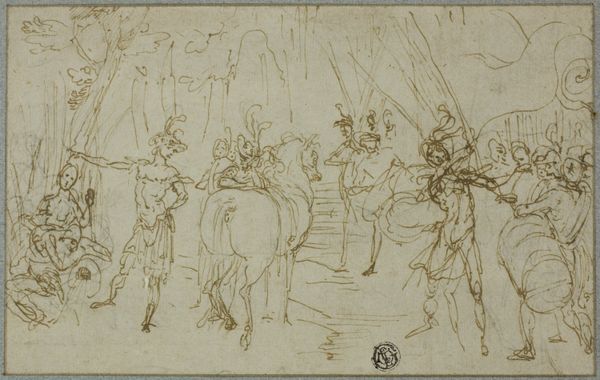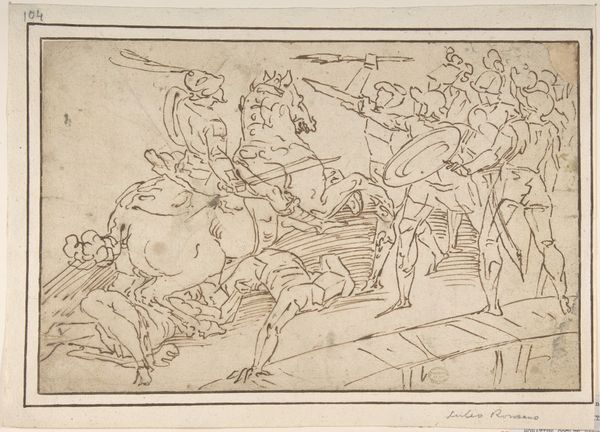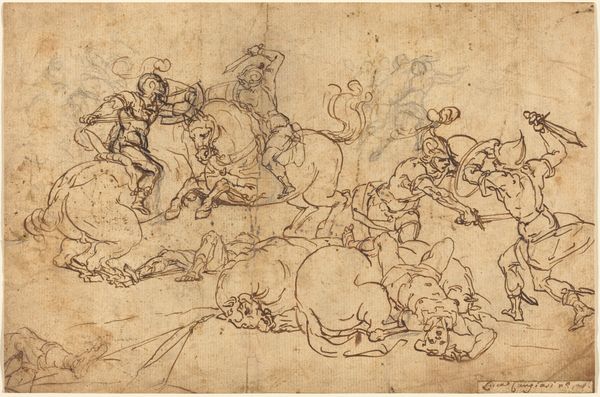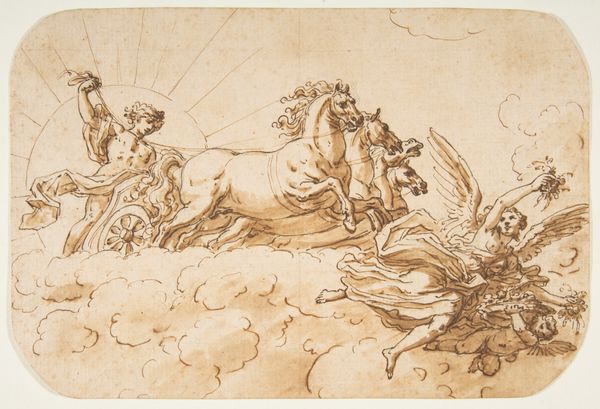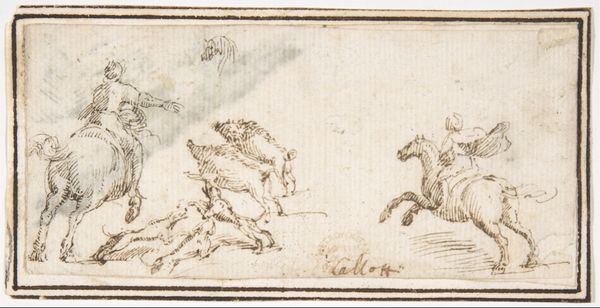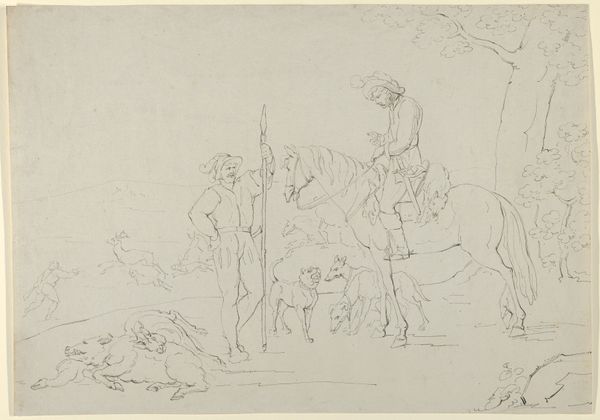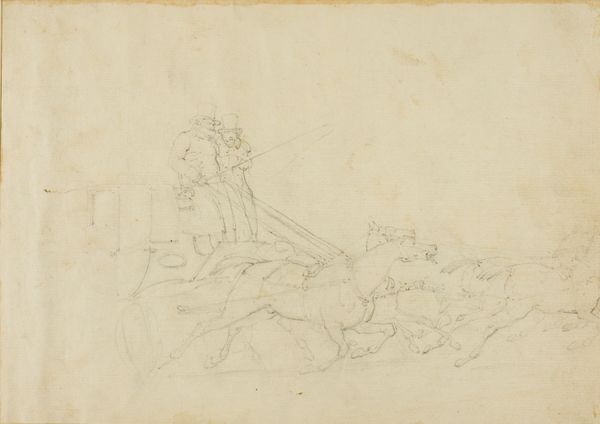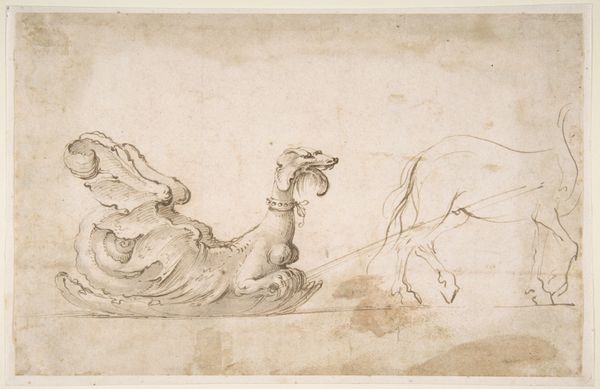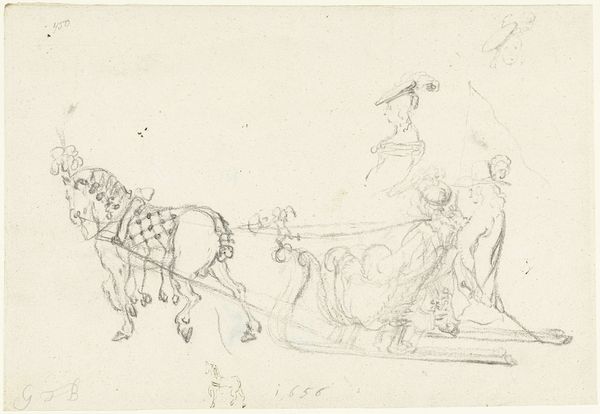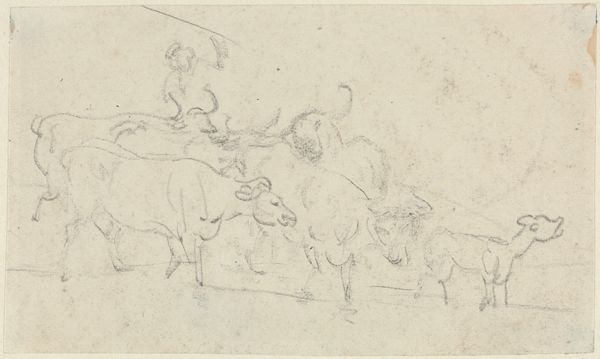
drawing, print, ink
#
drawing
#
ink drawing
#
narrative-art
#
baroque
#
ink painting
# print
#
landscape
#
figuration
#
ink
#
history-painting
Dimensions: 3 5/8 x 4-3/4 in. (9.2 x 12.1 cm)
Copyright: Public Domain
Editor: This is Francesco Allegrini’s "The Rape of Europa," created sometime between 1624 and 1663. It's an ink drawing, and what strikes me is the seemingly carefree depiction of such a violent subject. How do you interpret this work, considering the context of its title? Curator: The title, of course, frames our understanding. The story of Europa is not merely a historical event to be depicted, but also a cultural artifact that exposes power dynamics and gendered violence that persist even today. Consider the landscape: is it idyllic, or is it indifferent to Europa’s plight? Editor: I see what you mean. The other figures seem almost unaware of what's happening. Curator: Exactly! And what about the bull, Zeus in disguise? Is there an element of seduction versus abduction? How does Allegrini navigate this ambiguity? Often these historical depictions aestheticize sexual assault, neutralizing it, turning it into something palatable for the male gaze. Is that what's happening here? Editor: So, by examining the artwork through a contemporary lens, we can challenge the traditional interpretations? Curator: Precisely. By engaging with feminist theory, we can understand how this artwork participates in a visual culture that has historically objectified and silenced women. It allows us to recognize these patterns and question them. The scale and the style contribute. Do the medium's light lines diminish from or amplify the narrative of harm? Editor: I hadn’t thought about it that way before, focusing on how the artwork engages in conversations about gender and power. Thank you. Curator: Indeed! By connecting art history with contemporary theory, we gain new insight into the image's many narrative layers.
Comments
No comments
Be the first to comment and join the conversation on the ultimate creative platform.


